Have you ever been given the offer letter? If so, you have given an interview in the organization to get a job; therefore, you get it. The offer letter is the formal letter given to the potential employees before they get a job.
You can use the free offer letter template word, and this letter will highlight the details of those positions, working criteria, and the department. This letter is generally used between organizations and mostly between employees and employers. Let’s learn more about It.
What is an offer letter?
An offer letter is a formal letter from an employer to a job candidate. It says, “We’d like you to work with us!” The letter usually explains the job details, salary, etc.
Types of Offer Letters
When you hear “offer letter,” what comes to your mind? It’s a letter saying, “Hey, we want you to work with us!” But did you know there are different types of offer letters? Let’s dive into each one!
- Employment Letters:
Think of this as the “usual” offer letter.
- What’s Inside: It tells you about a full-time job they want you to do. It will mention how much money you’ll get (salary), the job’s (position) name, and other important stuff about working there.
- When You Get It: Usually, after you’ve had an interview, they decide they want you on their team.
- Job Offer Letters:
It is a special letter for a particular job.
- What’s Inside: It talks about the specific job they’re offering. It’ll tell you what they expect you to do (responsibilities) and how they hope you’ll do it.
- When You Get It: After they’ve picked you for a certain role, like being a manager or a designer.
- Promotion Offer Letters:
It means they think you’re doing a great job and want you to do even more!
- What’s Inside: It tells current employees about a higher job they can do. It’ll mention the new tasks, maybe a new title, and often more money (revised compensation).
- When You Get It: When your boss thinks you’re ready to take on more responsibilities and climb up in the company.
- Counteroffer Letters:
Imagine saying, “Hmm, can we change a few things?”
- What’s Inside: This letter responds to an initial offer. You may want more vacation days or a different work schedule. This letter suggests those changes.
- When You Get It: After you’ve been offered but want to discuss and change some terms.
- Temporary Job Offer Letters:
Not all jobs last forever. Some are just for a little while.
- What’s Inside: It tells about short-time jobs. It will mention how long the job will last and what you’ll be doing. It’s specific to roles like seasonal work or project-based tasks.
- When You Get It: When a company needs help for a short period, like during the holiday season or for a special project.
Essential Components of an Offer Letter:
Have you ever gotten an offer letter from a job? Or you’re a boss who needs to write one. Offer letters are super important. They’re like a handshake in writing. Let’s break down what should be in them in easy words!
- What Job Are You Doing? (Position and Responsibilities)
It is the start of the letter. It tells you:
- Job Name: Like, will you be a teacher, a chef, or a driver?
- What You’ll Do: This is a list of things you’ll do on the job. Like, a chef will cook, and a teacher will teach. It helps so everyone knows what to expect.
- How Much Money You’ll Get (Compensation Details)
Everyone wants to know this part! This section tells:
- Pay Amount: How much money you’ll get.
- Bonuses: Extra money you get if you do a really good job.
- How You Get Paid: Will they put money directly into your bank? Or give you a paper check?
- How Often: Will you get money every month or two weeks?
- Cool Extras with the Job (Benefits and Perks)
Other than money, jobs sometimes give other cool stuff. Here, they’ll tell about:
- Health Stuff: Like getting help to pay for doctor visits or teeth check-ups.
- Saving for Later: Some jobs help you save money when you’re old and don’t want to work.
- Fun Extras: Some places might give you free passes to a gym or shares in the company.
- Papers You Need to Give Them (Relevant Documents)
Jobs need some papers from you. This section tells:
- What Papers: Like your ID, certificates, or letters from your old job.
- Why: This helps the workplace know more about you and get you set up.
- When You Start and Work Hours (Start Date and Work Timings)
It is the last big part. It tells:
- First Day: The day you’ll start your new job.
- Your Hours: When you’ll start each day and when you’ll go home.
- Training: If they want to teach you something before you start, they’ll say it here.
Benefits of an Offer Letter
Getting or giving It is always an exciting step in the hiring process. But beyond just being a formal job invitation to join a company, It has several benefits. Here are why they’re so valuable:
- Clear Communication: The outlines of the job details in black and white. It means the employer and the potential employee clearly understand the job role offer, salary agreement, and other terms. There’s more room for clarity later on!
- Legal Protection: If there’s ever a disagreement or issue in the future, the offer letter can act as a reference point. It shows what was agreed upon at the start, which can help resolve misunderstandings.
- Sets Expectations: By explaining the job role, responsibilities, and other terms, the offer letter helps set the right expectations.
- Provides a Warm Welcome: It can be a joyous moment for a job seeker.
- Streamlines the Onboarding Process: It often mentions documents or steps the new employee needs to take before they start. It can make the onboarding communication process smoother and more organized.
- Flexibility and Clarity: For the employer, drafting an offer letter allows them to tailor the terms detailed to the candidate, ensuring that the offer matches the discussions they had during the interview process.
- Confirmation of Key Details: Salary, benefits, and start date are crucial. Having them in writing in the offer letter ensures both parties are on the same page and agree to the terms.
- Professionalism: Sending an offer letter reflects professionalism for the company. It shows they have a structured hiring confirmation process and value transparency.
How to Write an Offer Letter
It is an essential part of the hiring process and a formal way to offer a job to a candidate. Here’s a guide on how to write a professional offer letter:
- Use Company Letterhead: Start with your company’s official letterhead. It makes the letter look professional and authentic.
- Date and Address:
- Mention the date at the top.
- Address the candidate directly. Use their full name for a personal touch.
- Warm Opening: Begin with a friendly greeting. We are pleased to extend an offer for the position outline of [Job Title] at [Company Name].
- Position and Responsibilities:
- Clearly state the job title.
- List out key responsibilities and tasks. It gives clarity on what’s expected from the candidate.
- Start Date: Mention the proposed start date for the role. It helps the candidate plan their transition.
- Compensation Details:
- Clearly state the salary. Mention the pay cycle, e.g., monthly or bi-weekly.
- If there are bonuses or other incentives, detail them out.
- Benefits and Perks:
- List down the benefits like health insurance, dental coverage, retirement plans, etc.
- Mention any additional perks like gym memberships, stock options, or employee discounts.
- Work Hours and Location:
- State the regular working hours and days.
- Mention the primary workplace location. If there’s a possibility of remote work or travel, include that too.
- Probation Period (if applicable):If there’s a probationary period, specify its duration and any employment
terms related to it.
- Necessary Documentation: List any documents the candidate needs to submit before joining. It can include identity proofs, educational certificates, etc.
- Terms and Conditions:
- Mention any other terms related to the job. It can include confidentiality clauses, non-compete agreements, etc.
- If there’s a more detailed employment contract, you can reference it here.
- Response Deadline: It’s good to give a date by which you’d like the candidate to respond. It helps expedite the process.
- Warm Closing: End on a positive note. We are excited about the possibility of you joining our team and look forward to your positive response.
- Signature: Sign off with your name, title, and contact details. It’s a personal touch and gives the candidate a point of contact for any queries.
- Enclosures (if any):If you’re including other documents, like a detailed job description or benefits brochure, mention them here.
Free Offer Letter Template Word
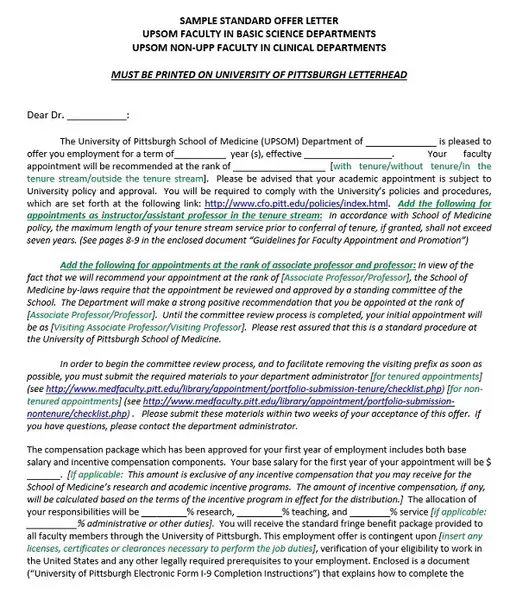
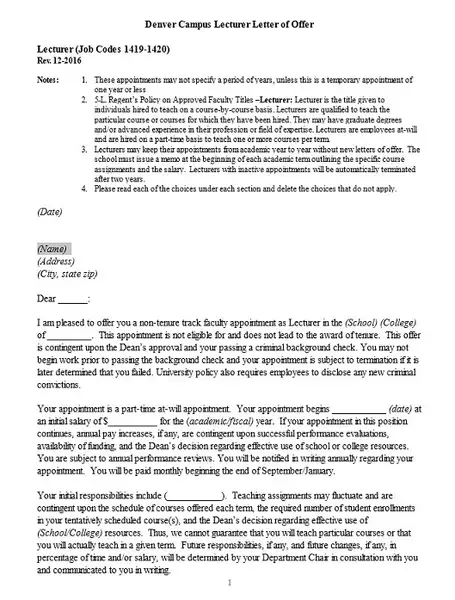
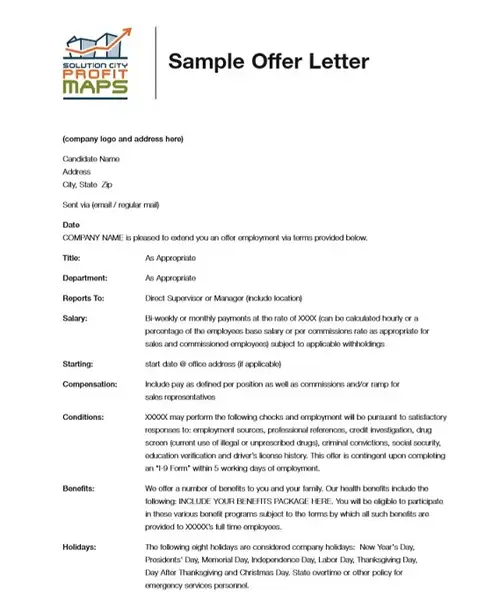
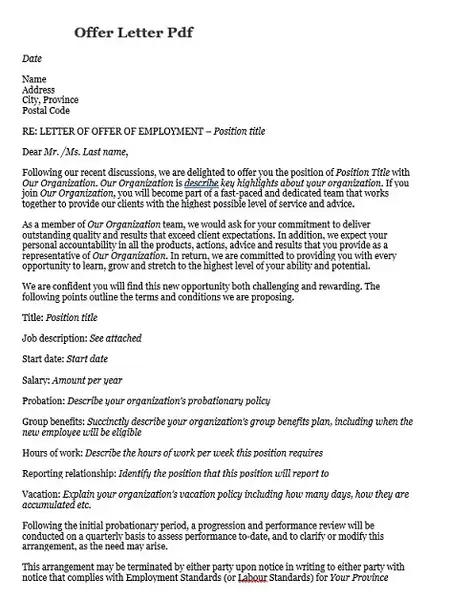
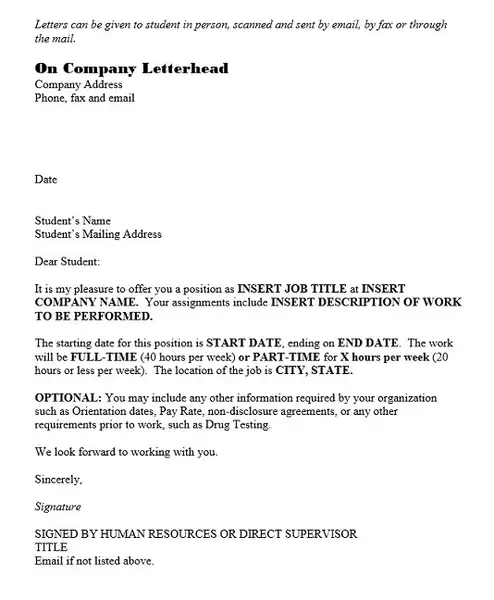
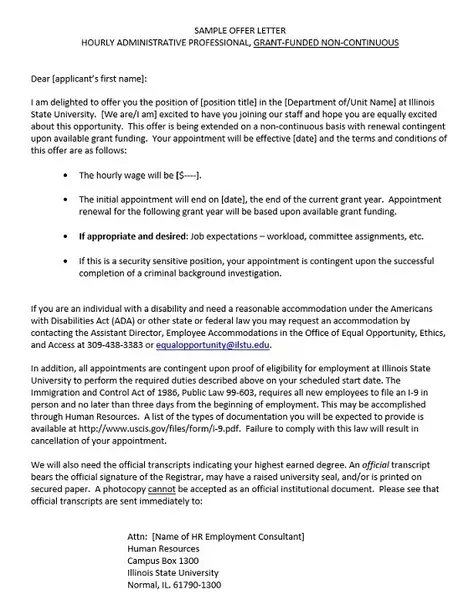
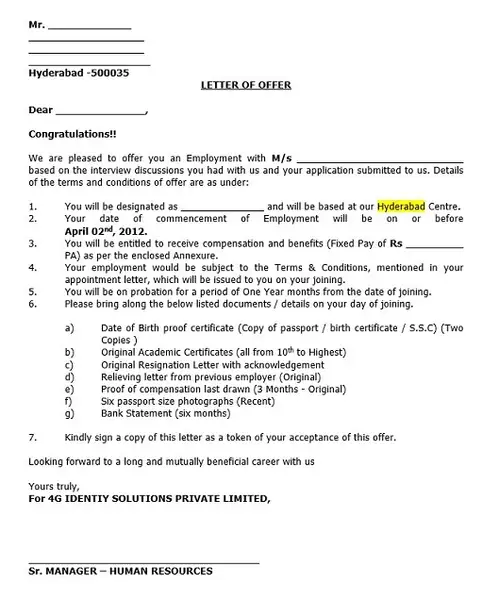
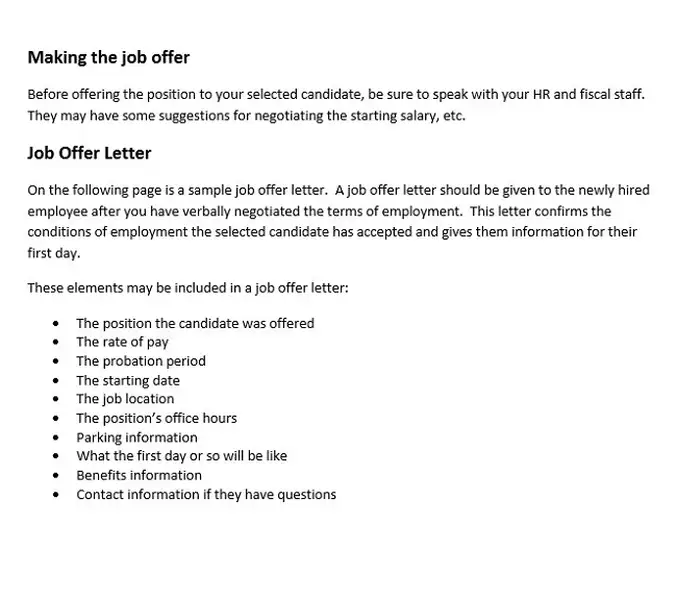
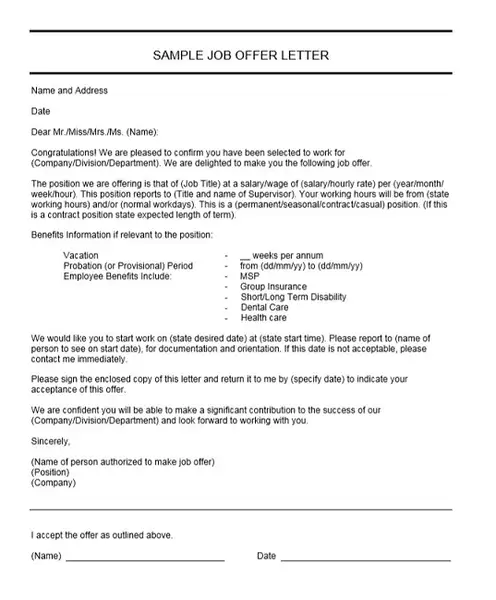
Simple Offer Letter Template Word
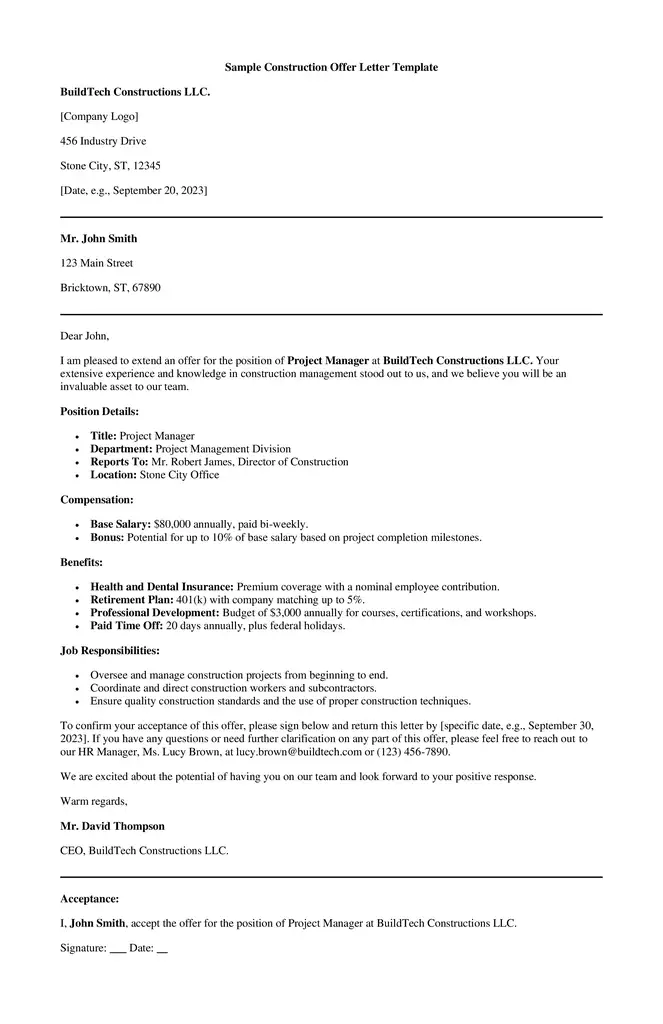
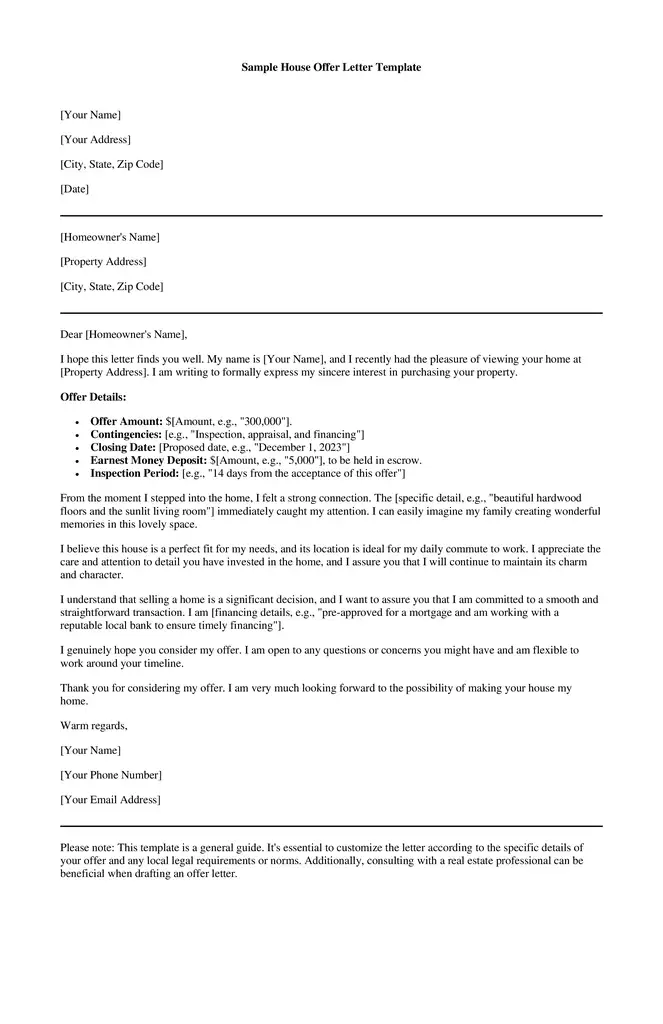
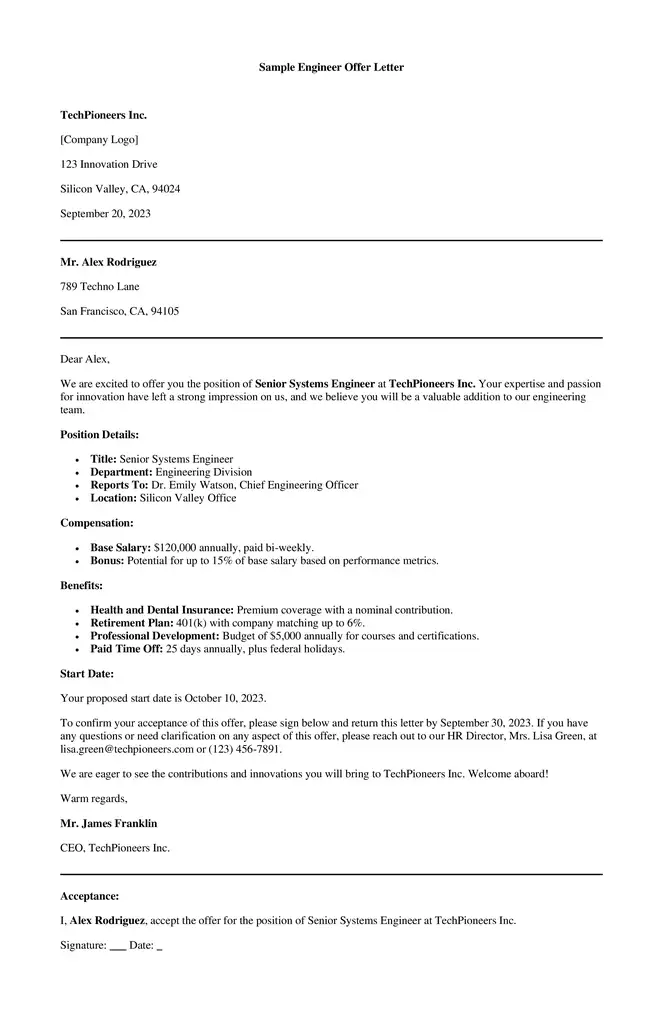
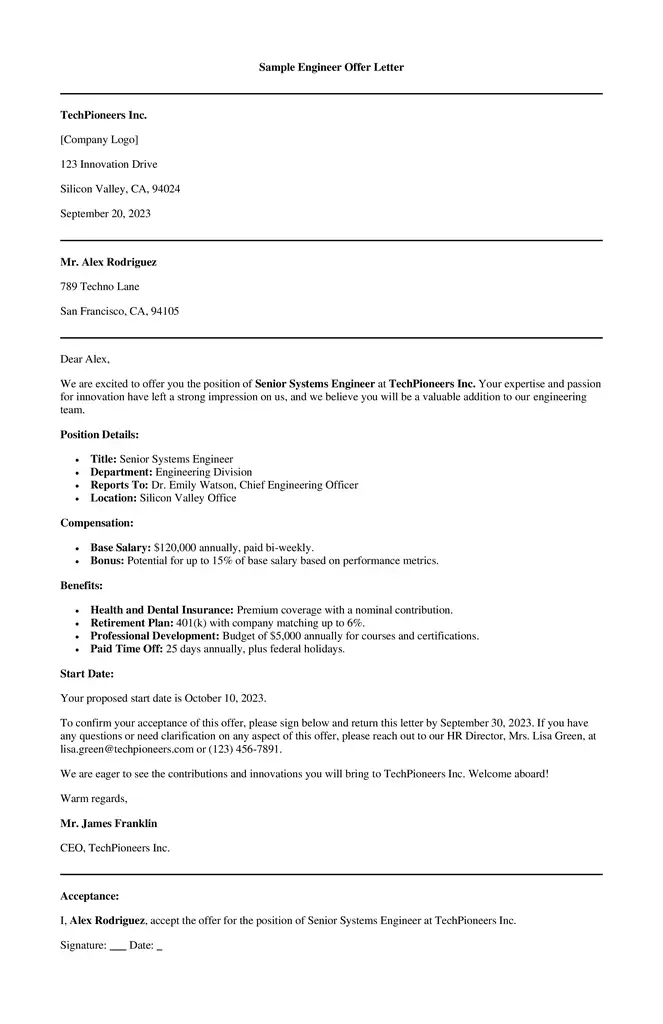
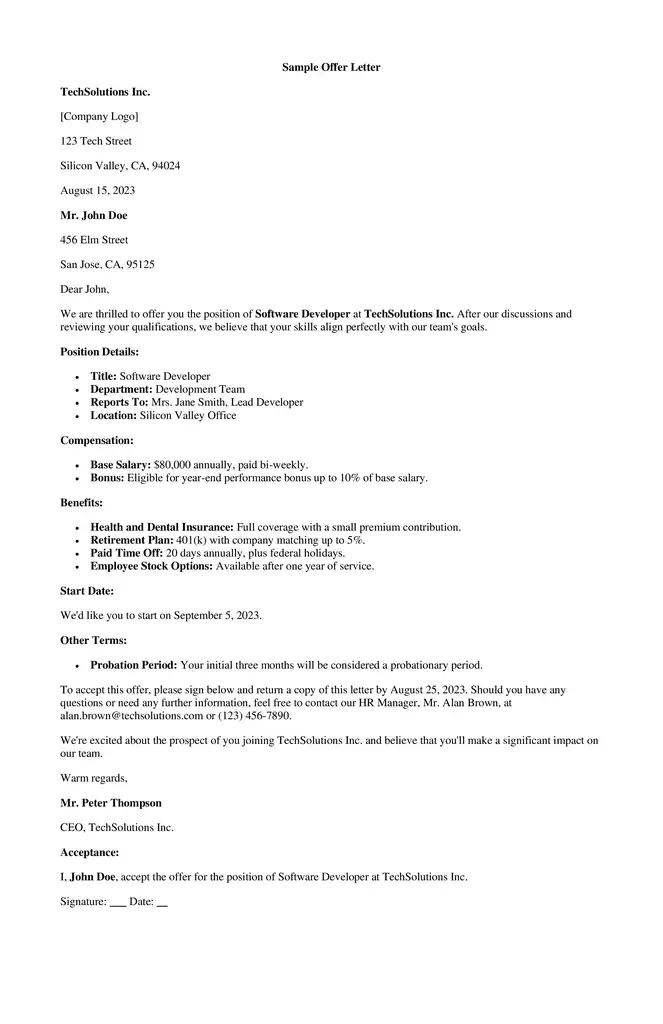
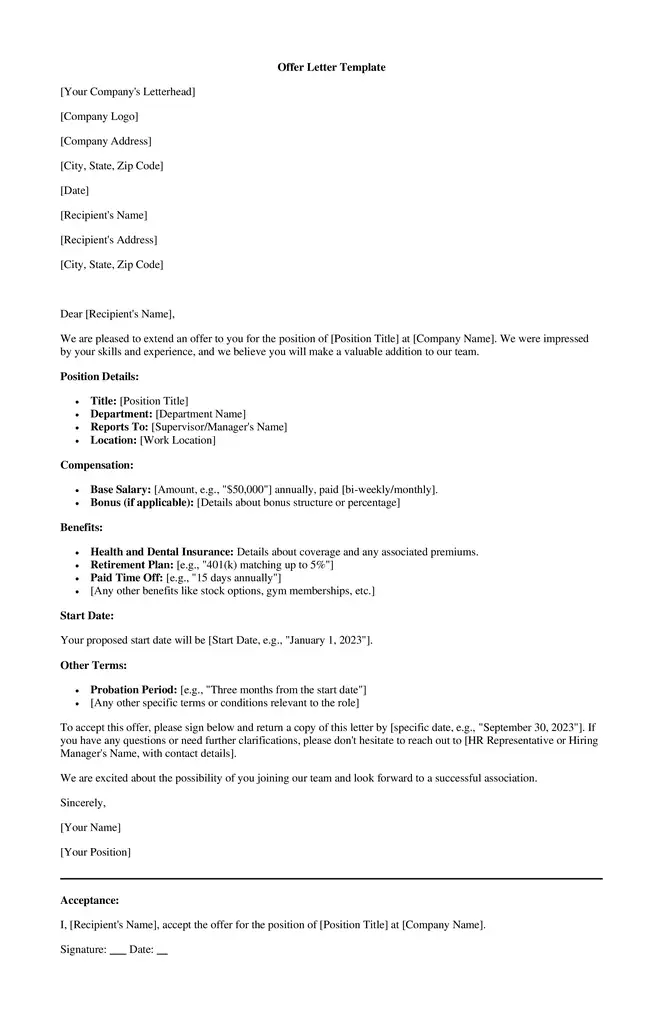
Common Mistakes to Avoid in Offer Letters
Offer letters are crucial in the hiring process. But sometimes, even the best of companies can make mistakes while drafting them. Let’s look at some common slip-ups and how to avoid them:
- Being Vague about the Job Role: The Mistake: Needing to be clearer about the job responsibilities. How to Avoid: Be specific. List out the key responsibilities and tasks the employee is expected to handle.
- Missing Salary Details: The Mistake is not mentioning the salary or needing to be clearer about bonuses and increments. How to Avoid: Clearly state the salary, frequency of payment, and any other compensation details.
- Over-Promising Benefits: The Mistake: Promising benefits that the company might not be able to deliver. How to Avoid: Only certain mentioned benefits. If something is under consideration or might change, it’s better to leave it out.
- Not Specifying Job Duration: The Mistake: Not stating whether the position is permanent, temporary, or contractual. How to Avoid: Clearly mention the job’s duration and any conditions related to contract extensions or renewals.
- Skipping Over Probation Period Details: The Mistake: Not mentioning or being unclear about the probationary period. How to Avoid: State the length of the probation period and what happens once it ends.
- Forgetting Confidentiality Clauses: The Mistake: Not including terms about company confidentiality. How to Avoid: Add a section reminding the employee of their responsibility to keep company information confidential.
- Not Including Termination Conditions: The Mistake: Leaving out details about what could lead to job termination. How to Avoid: Clearly list the conditions or actions that might result in the job ending.
- Being Informal or Unprofessional: The Mistake: Using informal language or not following a professional format. How to Avoid: Stick to a formal tone. Proofread the letter for any typos or grammatical errors.
- Missing Out Key Details: The Mistake: Forgetting to mention the start date, work timings, or reporting manager. How to Avoid: Use a checklist or template to ensure all essential details are covered.
- Not Reviewing with Legal or HR: The Mistake is not getting the letter vetted by the HR or legal team. How to Avoid: Always have the final draft reviewed by professionals to ensure it’s compliant with company policies and legal standards.
An offer letter is a reflection of the company’s professionalism and its commitment to the new employee. Avoiding these common mistakes ensures a smoother hiring process and sets a positive tone for the employer-employee relationship.
FAQs
Do I have to sign the offer letter?
Yes, most of the time. By signing, you say, “I agree to the job terms.” If you need clarification on something, ask before signing!
Can I negotiate what’s in the offer letter?
Often, yes! If you want changes, like more pay or different work hours, it’s okay to ask. If the employer agrees, they might send a new or counteroffer letter.
Is an offer letter the same as a contract?
Not really. An offer letter is a simple “job invite.” A contract is a detailed legal paper with lots of terms and conditions. After the offer letter, you might get a contract, too.
What if I get a better job offer after signing the offer letter?
It can be tricky. If you decide to take the new job, telling the first employer is polite.
How long do I have to decide about the offer?
The letter might say a date by which you should decide. If it doesn’t, it’s a good idea to ask. Letting know your decision is always nice, even if it’s a “no.”
What if the job is different from what’s in the offer letter?
If the job differs from the letter, talking to your boss or HR is okay. The letter is like a promise, so it’s fair to discuss any big differences.
Can I keep a copy of the offer letter?
It’s smart to keep a copy. It helps you remember the job details and can be useful.
What’s a “conditional” offer letter?
It means the job offer depends on certain things. You should pass a background check or a medical exam first.
Are offer letters legally binding?
Offer letters are like promises. They’re less strong than contracts, but they do show what the employer offered and what you agreed to. If there are big issues later, the letter can be important evidence.

The content creator team at calipsotree.com is dedicated to making topics accessible to everyone, with over 9 years of experience in writing and breaking down complex concepts into easy-to-understand articles that answer readers’ financial questions.








